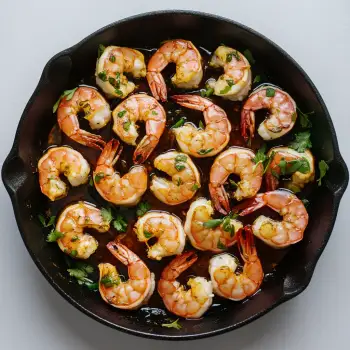
 25 minutes
25 minutesA simple yet luxurious Italian pasta dish highlighting the rich flavors of Pecorino Romano and black pepper.


tablespoons
Black Pepper, coarsely ground
to taste
to taste
0 lb
tablespoons
Pecorino Romano Cheese, very finely grated
0 oz
1. Heat Olive Oil and Pepper
Start by heating 3 tablespoons of extra-virgin olive oil in a medium skillet over medium heat. Add about a teaspoon of coarsely ground black pepper to the oil. Let the pepper infuse its aromatic oils into the olive oil, which should take about a minute. You’ll know it’s ready when the pepper is fragrant and just starting to sizzle.
2. Cook Spaghetti
Meanwhile, place your spaghetti in a large skillet and cover it with water. Add a small pinch of kosher salt to the water. Cook the spaghetti until it’s al dente, which should be about one minute less than the package recommends. The pasta will finish cooking in the sauce later, so it's important not to overcook it at this stage.
3. Prepare the Sauce
Once the spaghetti is ready, transfer 2 to 3 tablespoons of the pasta cooking water to the skillet with the olive oil and pepper. Add the unsalted butter to this mixture. The starchy pasta water helps emulsify the butter and oil, creating the base of your sauce. Stir this mixture until the butter is fully melted and the sauce begins to thicken and coat the back of a spoon.
4. Combine Pasta and Sauce
Using tongs, lift the spaghetti out of its cooking water and transfer it directly into the skillet with the olive oil and butter mixture. This helps the pasta absorb the flavors of the sauce. Add the finely grated Pecorino Romano cheese and the remaining tablespoon of olive oil to the skillet. Stir everything together with a fork to ensure the cheese melts evenly and forms a creamy sauce that coats each strand of spaghetti.
5. Adjust and Serve
If the sauce seems too thick, add a bit more pasta water, a tablespoon at a time, until you reach a smooth and glossy consistency. Taste your cacio e pepe and adjust the seasoning with more salt and black pepper if needed. Serve the spaghetti immediately, topped with extra grated Pecorino Romano cheese and a sprinkle of freshly ground black pepper. Enjoy your classic spaghetti cacio e pepe, a simple yet luxurious dish that showcases the rich flavors of Pecorino Romano and black pepper.
Adapt the core technique with beaten eggs, pancetta or guanciale, and black pepper for a classic Carbonara.
Elevate the dish with fresh truffles or truffle oil for a luxurious flavor.
Transform the dish by sautéing garlic in olive oil, tossing with pasta and pasta water.
Add lemon zest and juice to the base for a fresh twist.
Substitute Pecorino Romano with Grana Padano, aged Manchego, or a blend of Parmigiano-Reggiano and Pecorino for a nuanced flavor profile.




Comments (0)